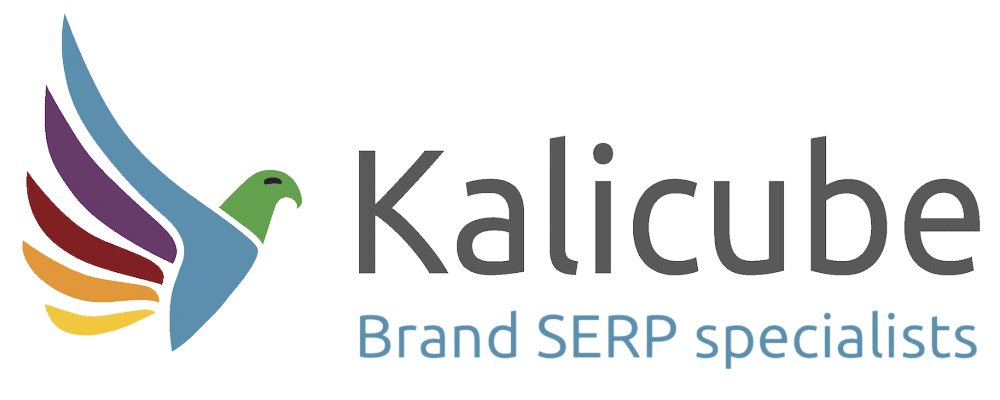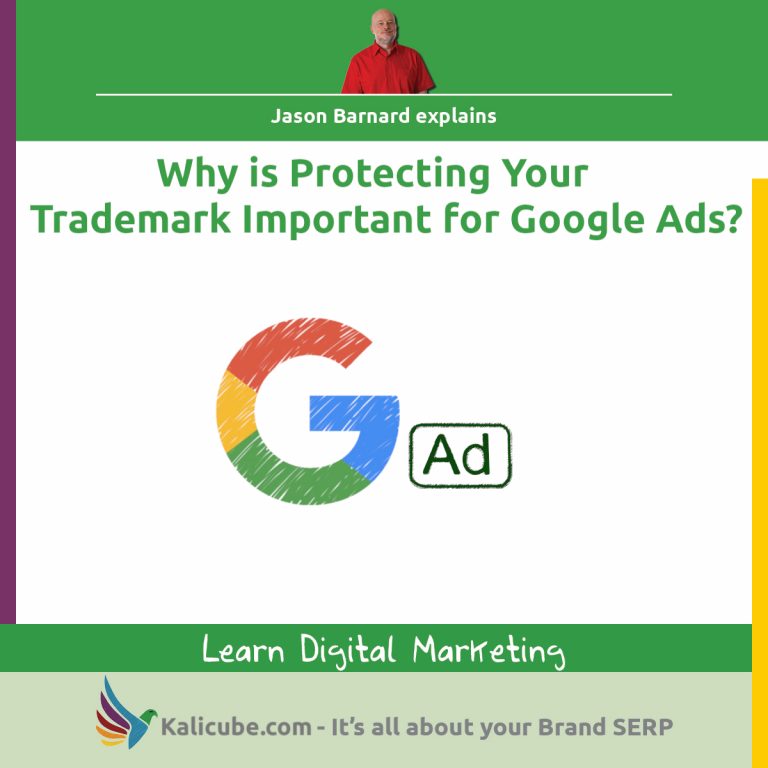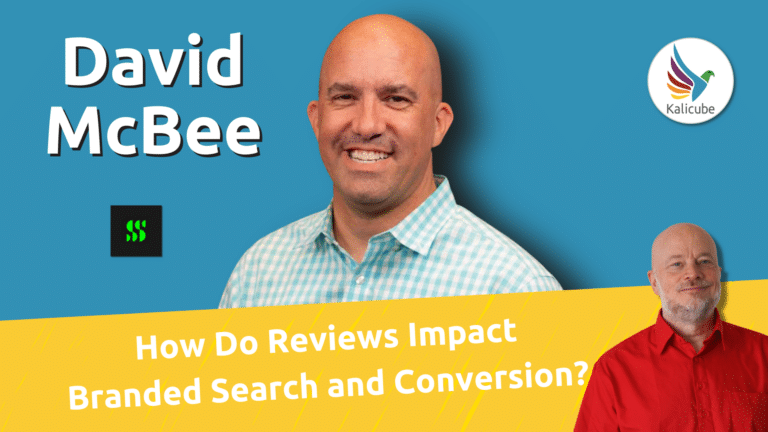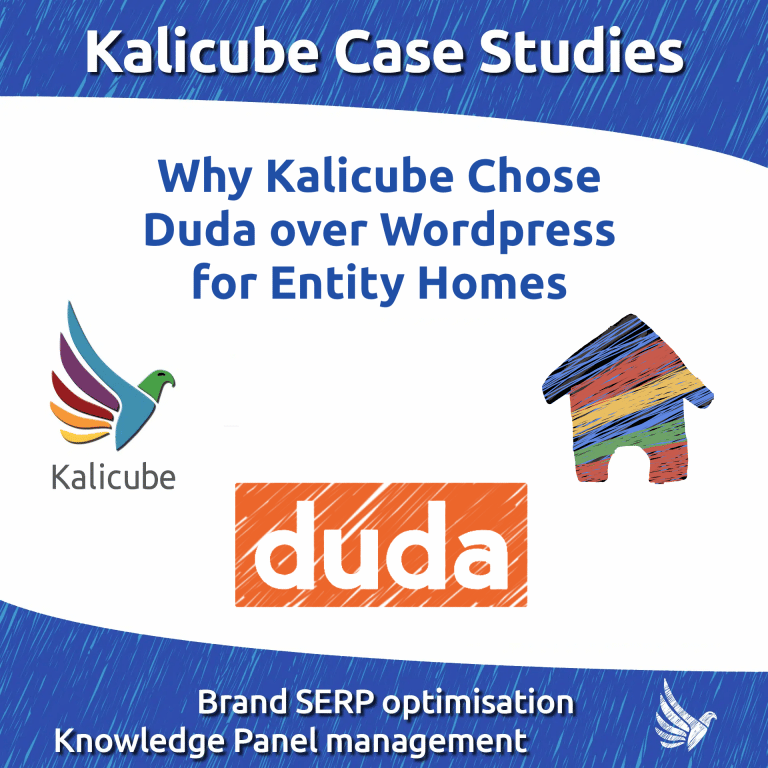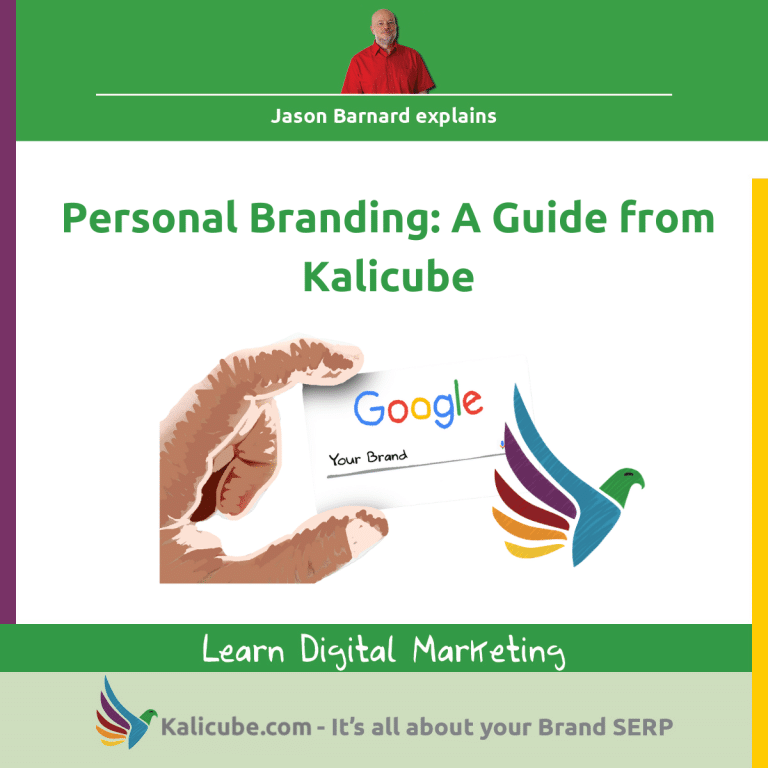Brand SERPs: What You Need To Know

In this article, you will learn the definition of a Brand SERP and get a basic understanding of how to create a compelling and optimised Brand SERP by The Brand SERP Guy, Jason Barnard.
What is a Brand SERP?
Simple Definition of a Brand SERP
Simply put, a Brand SERP is what appears on Google when someone searches your brand name.
Most people will search for your brand at some point before or during their working relationship with you. Some examples of people googling your brand name are: prospects, investors, partners, clients, journalists, job candidates, readers, subscribers…
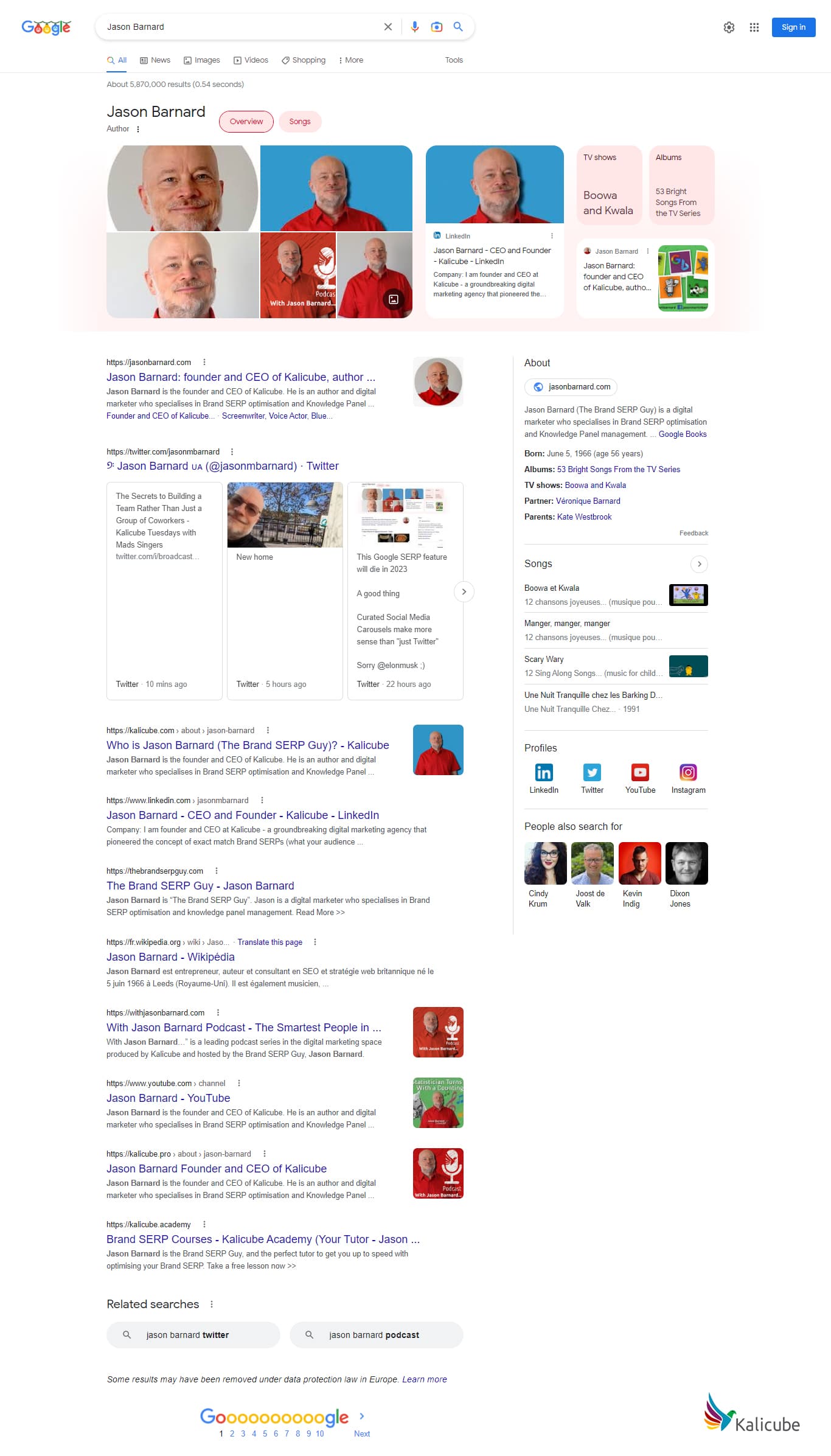
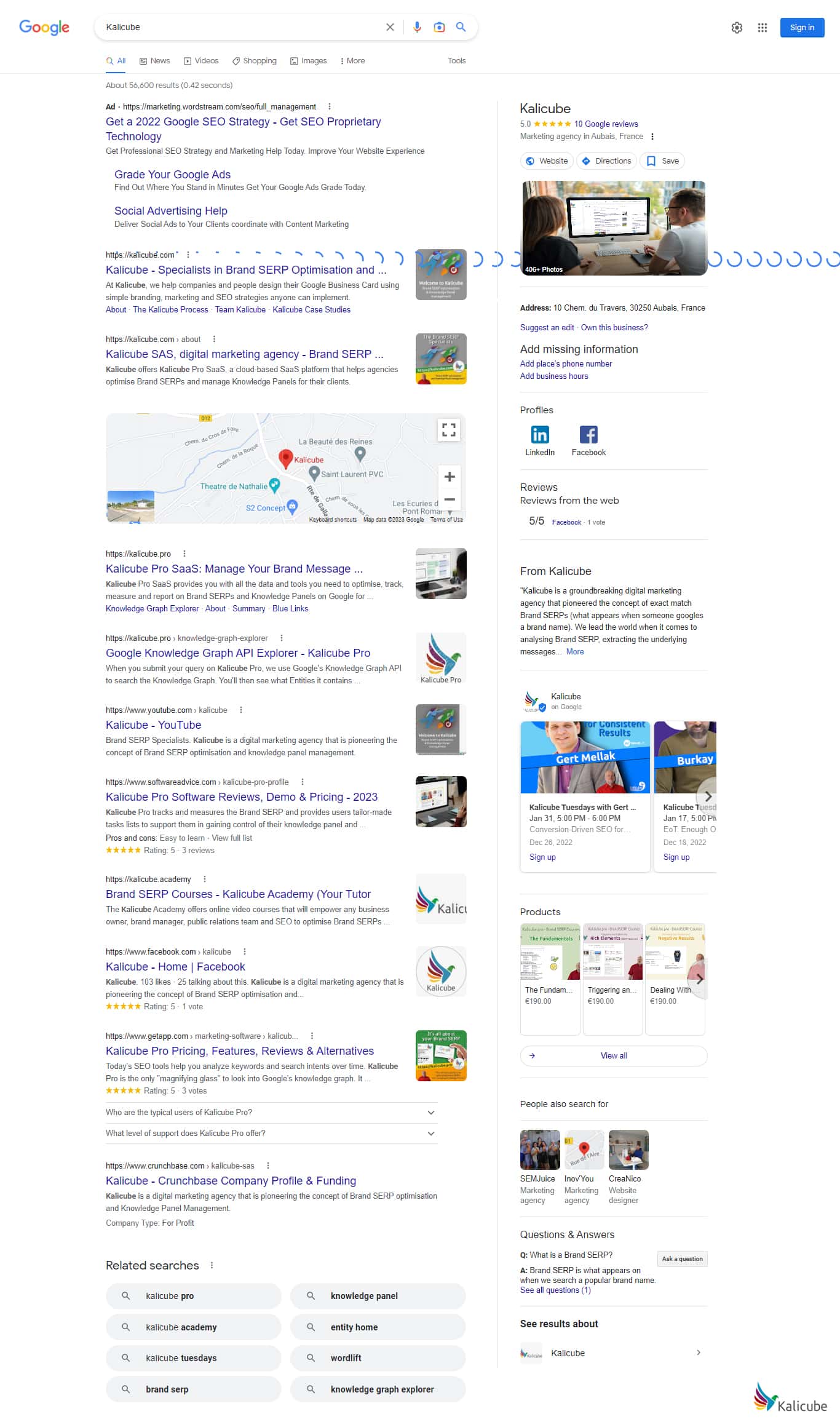
What they see when they search your brand name is vital. Their perception of your brand when that first page displays is a factor that could very well tip the balance in the decision they are making about doing, or continuing to do business with you.
As a brand you want your Brand SERP to be accurate, positive and convincing.
- Accurate: you want people to see information about you that is correct, complete and up to date.
- Positive: you want people to have a good first impression of you right off the bat.
- Convincing: you want to look like a brand they will want to do business with.
At some point in the customer journey, they’re going to Google your name.
Optimise your Brand SERP…. Buy the book (The Fundamentals of Brand SERPs for Business)
Watch Jason Barnard’s video explanation
Convincing = Rich Brand SERPs
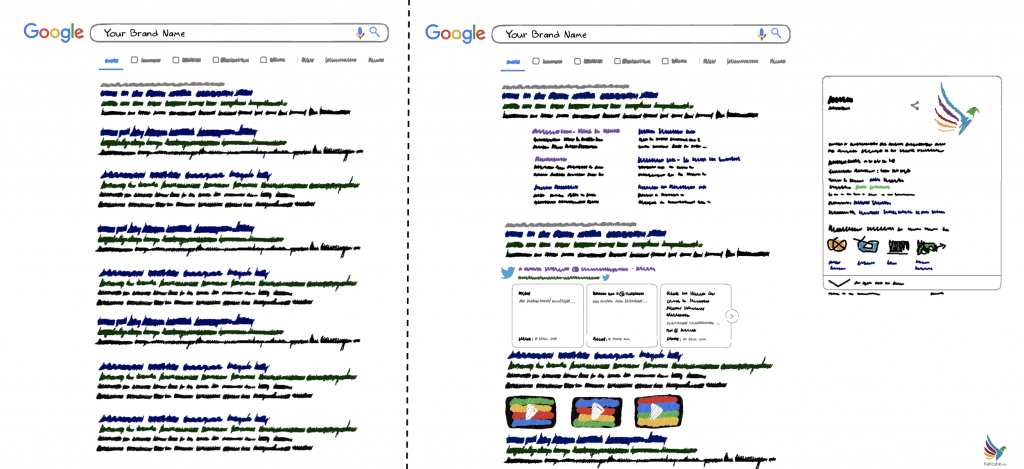
For your Brand SERP to be convincing, it needs Rich Elements. Video Boxes (recently called video result by Google), Image Boxes (recently called Image result) by Google , Twitter boxes, Knowledge Panel and so on. Like the one on the right.
The one on the left, with just text results or historically called “blue links” by Google, is not convincing and does not reflect well on the brand.
Sign up for the Kalicube Academy where you can learn more about Rich Elements and how to trigger them in your Brand SERP >>

Tracking, analysing and optimising your Brand SERP
There are 6 main reasons you need to track, analyse and optimise your Brand SERP – and one or more of these apply to every brand, whatever the size, location or industry.
- Ensure that clients and prospects see a reflection of your brand that is positive, accurate and convincing.
- Quickly evaluate the strengths and weaknesses of your digital strategy. The Brand SERP that Google provides is an easy-to-understand reflection of what is working in your strategy and what is not.
- Understand your audience (aka valuable, simple market research). Why pay a research company tens of thousands of dollars to interview a few hundred people when Google accurately tracks your entire audience in real time?
- Get a heads up on problems that are brewing under the surface so you can act before they explode in your face. The first signs of a rising reputation problem can be seen on pages 5 to 10 for a search on your brand name.
- Deal with negative content that rises to the surface. This is reputation management.
- Build a ‘reputation cushion’. If the results on the first page of results for a brand search are solid and evergreen, they won’t easily be replaced by short term news about a temporary issue or problem. I call this proactive reputation management.
Learn more about Kalicube’s Brand SERP Optimisation Process here.
Articles and videos about Brand SERPs
- What are Brand SERPS?
- Crafting your brand SERP—best practices
- Your Brand SERP is your Business Card
- Google Your Brand Name And Discover The Power of Your New Digital Business Card
Read about Kalicube and our work on Brand SERPs >>
Kalicube Solutions
- You can learn more about Brand SERPs and how you can control yours and ensure that you keep your potential clients focused on an accurate and convincing depiction of you with The Fundamentals of Brand SERPs for Business by Jason Barnard;
- You can browse our free resources (hundreds of articles, case studies and how-to’s to help you optimise your Brand SERP and manage your Knowledge Panel);
- You can sign up for the Kalicube Academy where you can learn more about Rich Elements and how to trigger them in your Brand SERP. We also offer in-depth video-driven courses, resources and quizzes that make optimising your Brand SERP and managing your Knowledge Panel a relatively simple task;
- You can opt-for the done-for-you Brand SERP and Knowledge Panel solutions where we do the hard work, identify the solutions and ensure that you achieve your goals and get Google “dancing to your tune.”
